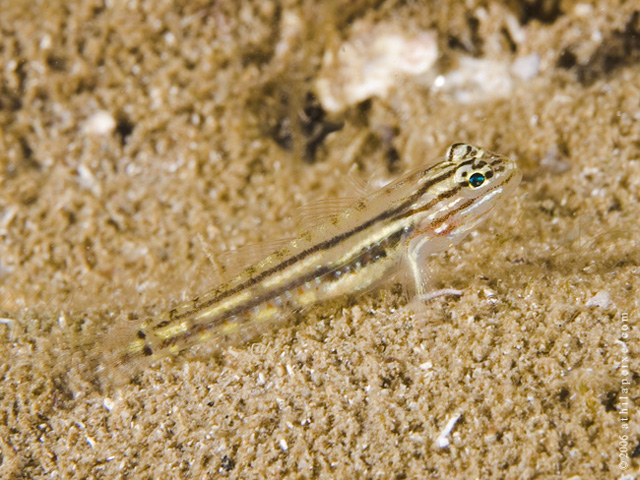| Gobiidae (Gobies), subfamily: Gobiinae |
| 8 cm TL (male/unsexed) |
|
reef-associated; marine; depth range 2 - 45 m |
| Western Atlantic: North Carolina, USA and Bermuda to Santa Catarina, Brazil (Ref. 57756); throughout the Caribbean Sea. |
|
Dorsal spines (total): 6-6; Dorsal soft rays (total): 10-10; Anal spines: 1-1; Anal soft rays: 10-10; Vertebrae: 26-26. With black spot on side of head above gill cover (Ref. 26938). Individuals from white sand bottom and clear water are pale with two rows of faint yellow spots on side of body; a horizontal orange streak extending posteriorly from middle of eye to above pectoral fin; a row of dusky spots at base of dorsal fins. Individuals from darker bottom and more turbid water are more darkly pigmented; there are 2 rows of dark spots on side of body and one mid-dorsally, fins dusky (Ref. 13442). |
| Inhabits clear white sandy areas near deep reefs and grassy and rocky areas. Burrows in the sand and the male guards the eggs (Ref. 5521). The Bridled goby, which has X-shaped marks and spots, occurs in both clear and more murky inshore waters, while the paler, very similar Sand goby, Coryphopterus tortugae [= Coryphopterus glaucofraenum], occurs over white sand (Ref. 26938). |
|
Least Concern (LC); Date assessed: 01 March 2010 Ref. (130435)
|
| harmless |
|
Abundant at some localities. |
Source and more info: www.fishbase.org. For personal, classroom, and other internal use only. Not for publication.

